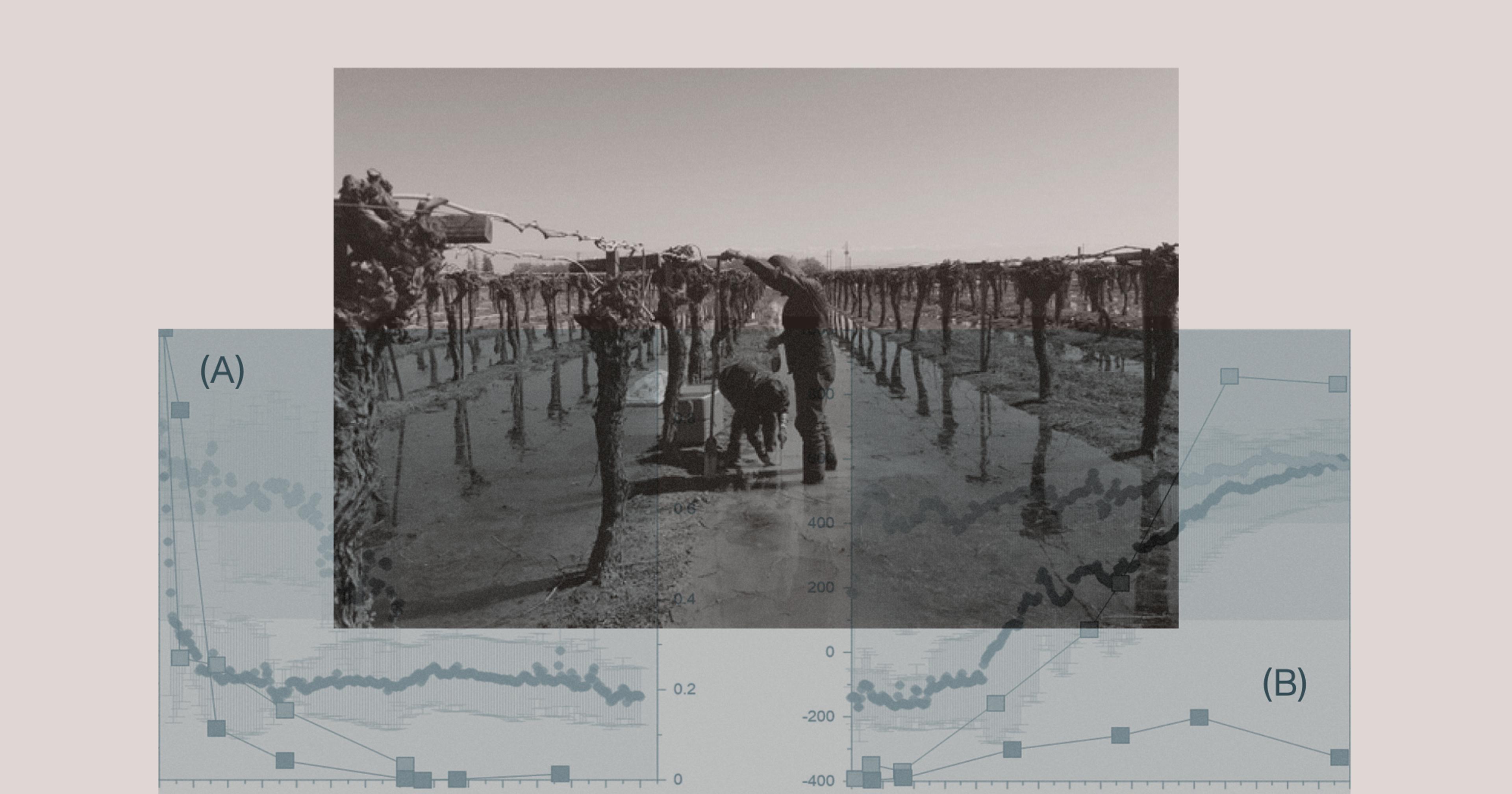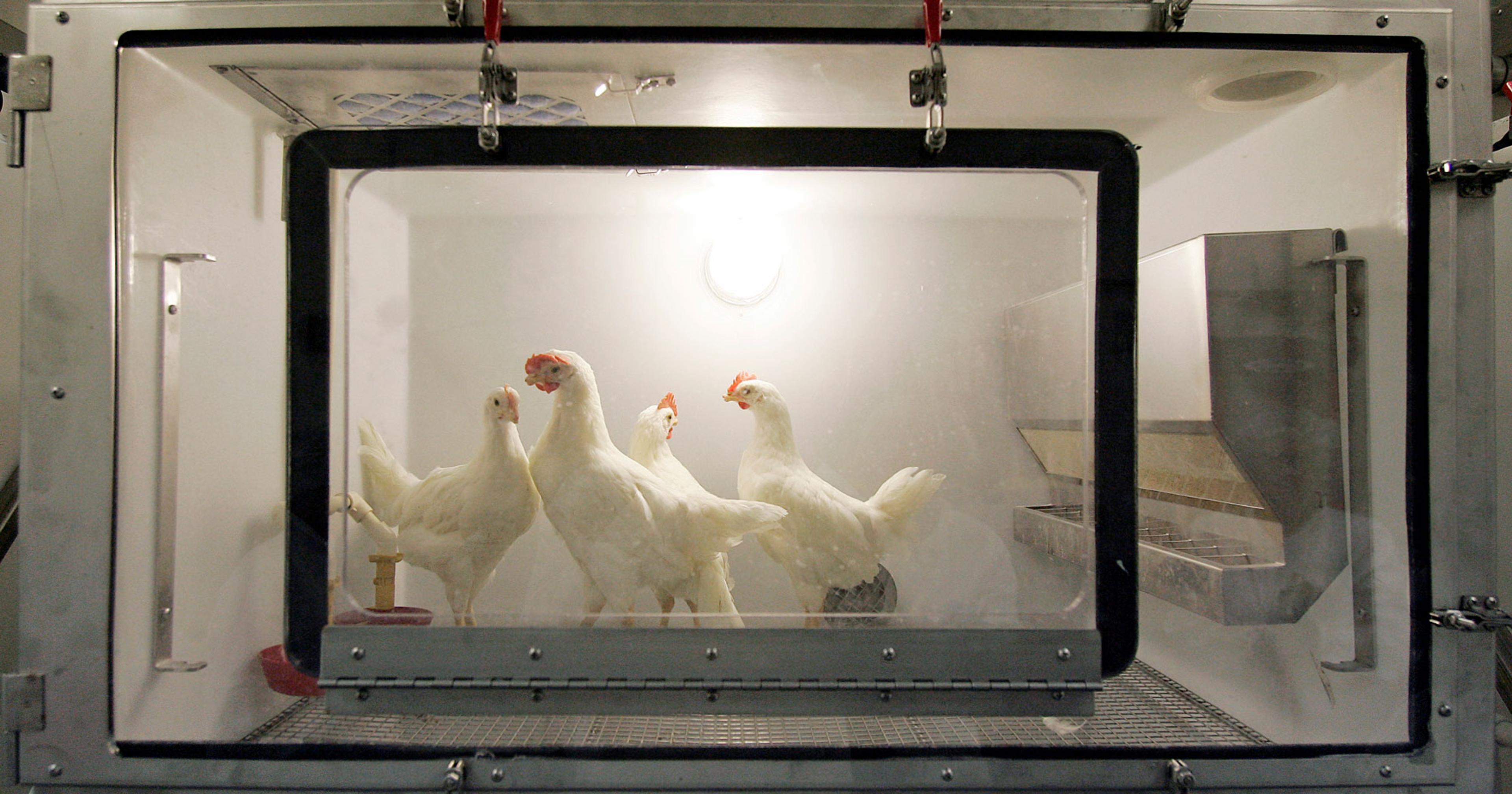New research investigates how nitrogen in farmland soils responds to recharge floodwaters.
Like much of California’s Central Valley, the small town of Dunnigan, located 35 miles northwest of Sacramento, has a history of groundwater depletion and resulting land subsidence, or sinking. They wanted to find a way to begin replenishing. So last year, the district applied for a grant through California’s Sustainable Groundwater Management Act to create the Dunnigan Area Recharge Program, and started flooding rice fields. “We saw the groundwater come up seven or eight feet very quickly,” said Bill Vanderwaal, general manager of the Dunnigan Water District.
Flooding farmland to restore groundwater — known as agricultural managed aquifer recharge, or Ag-MAR — has been in the spotlight lately, because of California’s record-breaking snowpack and subsequent floods. It’s seen as one of the most promising tools for addressing the state’s increasingly extreme precipitation events, as well as its over-drafted aquifers.
But the practice has also sparked concern about nitrogen leaching into groundwater, contaminating drinking water and causing health problems like blue baby syndrome. A new study by researchers from University of California, Davis, published in Science of the Total Environment, confronted these questions head-on, finding that the way nitrogen reacts to flooding is more complicated than just leaching.
Historically, the Central Valley flooded seasonally. “The land has been very accustomed to recharge and flooding, and we’ve taken that ability away by building levees and reservoirs,” said Helen Dahlke, a hydrologist at UC Davis and one of the authors of the article. This year, with more snowpack than reservoirs can hold, she said, “We’re remembering that the farmland used to be flooded, and saying, ‘Why not do that again?’”
During the last week of October 2022, Vanderwaal’s Dunnigan district applied 300 acre-feet (around 325,000 gallons) of surface water for flood recharge. From early February 2023 to mid-April, they repeated the flooding with an additional 1200 acre-feet, achieving a 92% percolation rate in some fields. Next season, he said, they plan to expand the managed flooding to 500 acres of fields, including those planted with wheat and other row crops in addition to rice. But they’ll avoid one crop: tomatoes, because of the high quantities of nitrogen fertilizer the crop receives during the growing season.
For decades, the Central Valley’s main land use has been agriculture, which has often included intensive application of synthetic nitrogen fertilizers. There’s residual nitrogen in the soil, and it’s at risk of leaching into the groundwater if the soil is flooded. This poses a concern not only because of the quantities in which farmers apply it, but also because nitrate, the form of it most common in fertilizers, is highly soluble. Since it doesn’t easily attach itself to grains of soil, “whenever there is water coming by, it will be easily dissolved and transported to wherever that water is going — and of course the main pathway is downwards toward the groundwater table,” said Dahlke.
That’s an issue for surrounding communities, many of whom depend on wells for their drinking water. Nitrogen contamination can reduce the body’s ability to carry oxygen, especially in babies, small children, and the elderly, and can cause chronic diseases. Already, up to 2 million Californians rely on drinking water from nitrate-contaminated sources.
“In extreme years like this one, there is so much water that we really don’t know where to put it.”
Previous research has suggested that grapevines are particularly apt crops for on-farm recharge, because they can tolerate excessive moisture around their roots, and because they receive relatively low applications of nitrogen fertilizer. To understand how managed flooding affected nitrogen in the soil, Dahlke and her team flooded two vineyards, one for two weeks and the other for four.
To measure the nitrogen, they took soil samples in the field and brought them to their lab, where they dried out the soil; mixed it with a solution that extracted all the nitrogen from the dry particles over the course of eight hours; then inserted vials of those solutions into a tool called a photometer to read their nitrogen content. “It’s still a fairly involved process — it would be nice if scientists would develop a more easy-to-use sensor,” said Dahlke.
The researchers found that while leaching dominates in the first few days of managed aquifer recharge, once the water is shut off, other processes dominate, including denitrification and immobilization, processes in which soil microbes transform nitrate into nitrogen gas or organic matter instead of letting it leach into groundwater. This series of events — first leaching, then other processes — held steady across across the two sites in the study, and also matched Dahlke’s observations at alfalfa and almond fields where she has conducted prior research about recharge.
The question remains, however, of how to optimize that balance — to minimize leaching during the first few days and promote microbial transformations later. While the order that the processes happen is similar across sites, Dahlke said, the amount of nitrogen being leached versus transformed depends on a variety of site-specific factors, such as how much fertilizer a farmer has applied, soil texture, and the amount of precipitation the farm received that year.
Soils that filled with water faster — that had a “high infiltration rate” — saw the most leaching and the least denitrification, because the saturated conditions meant there was no carbon dioxide to provide energy for microbes. Addressing that need requires restoring soil carbon. “Adding more carbon to the soils,” said Dahlke, “would provide microbial communities with the resources they need to do the work.”
The most successful programs incorporate lessons learned through trial and error about the best-suited soils and geologic constraints in their districts.
Joseph Choperena, Water Resources Project Director for the organization Sustainable Conservation, agreed with Dahlke. His group has been partnering with irrigation districts and other agencies on managed aquifer recharge since 2011. “There are certain crops where you will see generally higher nitrate levels that could get flushed when you’re doing recharge,” he said. “But it really just depends on the management practices of the grower.”
Sustainable Conservation is collaborating with environmental justice organizations on drinking water quality, and has made a series of best-practice documents available on its website. Choperena emphasized that the most successful programs are those that have incorporated lessons learned through trial and error over the course of years about the best-suited soils and the geologic constraints in their districts.
This long-term learning is important because the need for managed aquifer recharge in agriculture is only increasing. In March, California Governor Gavin Newsom issued an executive order allowing water managers “near-blanket” permission to undertake managed aquifer recharge.
“I don’t see any other way,” said Dahlke, of the need for on-farm recharge. “In extreme years like this one, there is so much water that we really don’t know where to put it. Groundwater is a perfect storage place. Now the question is, how are we going to get it in there?”










